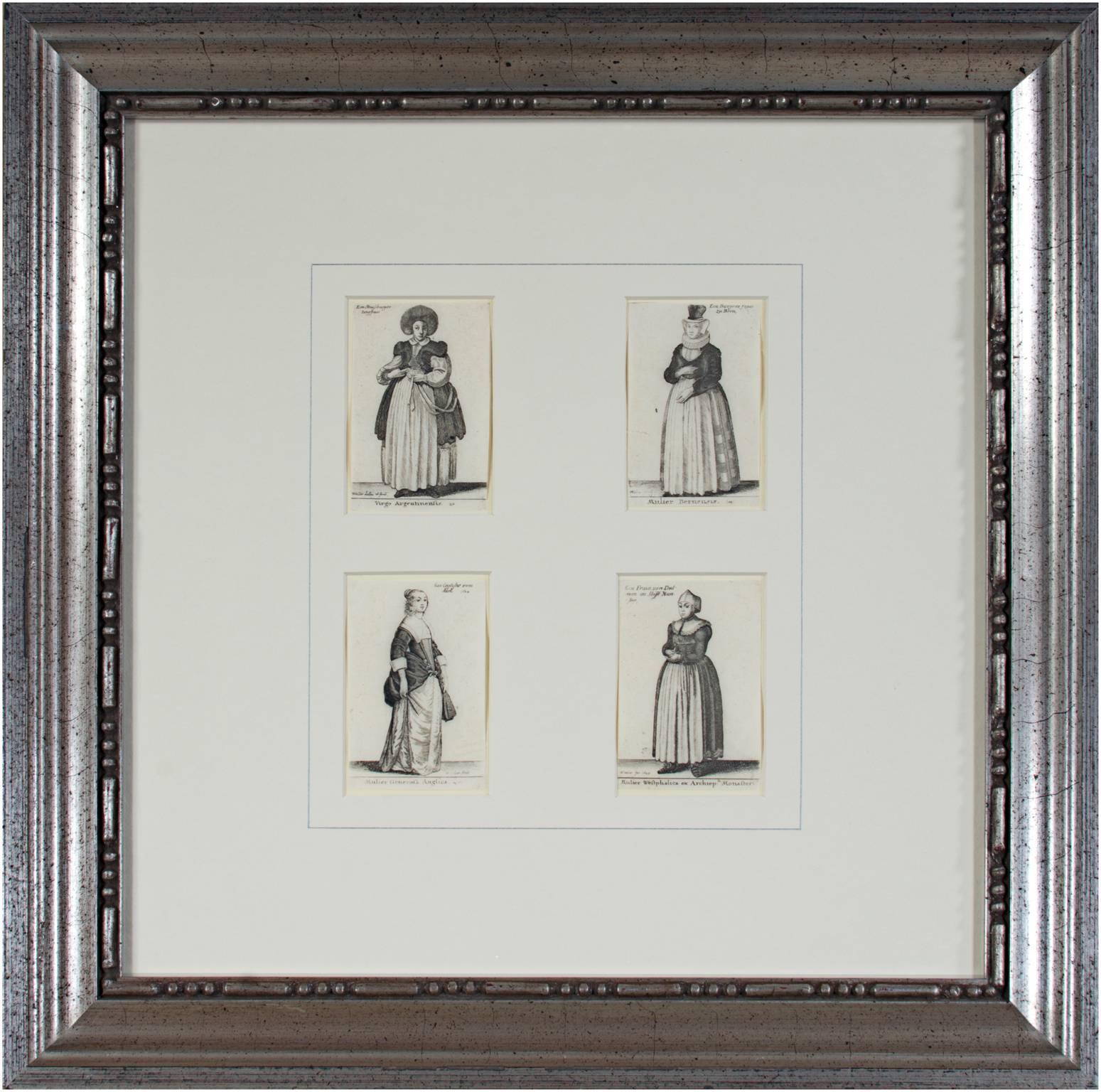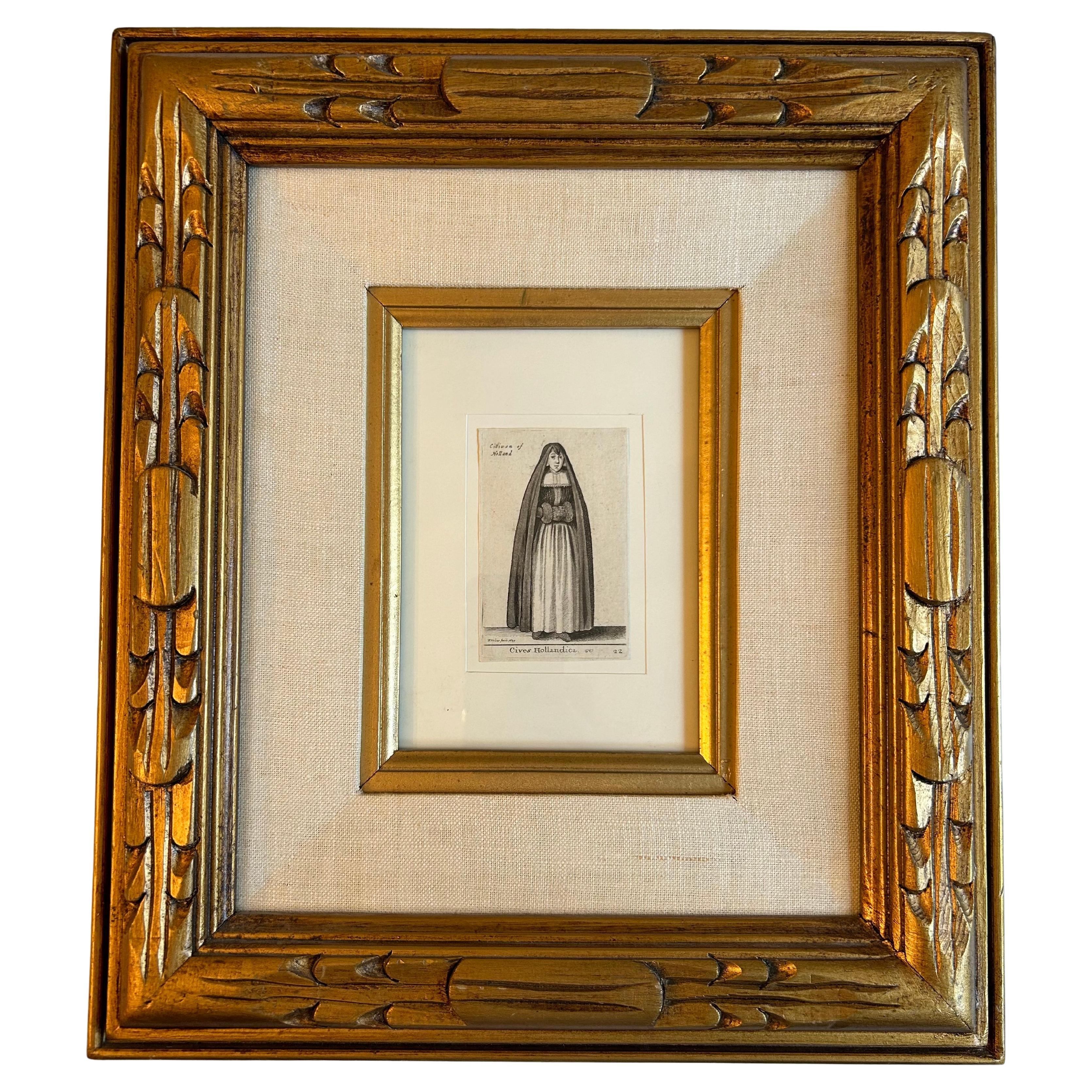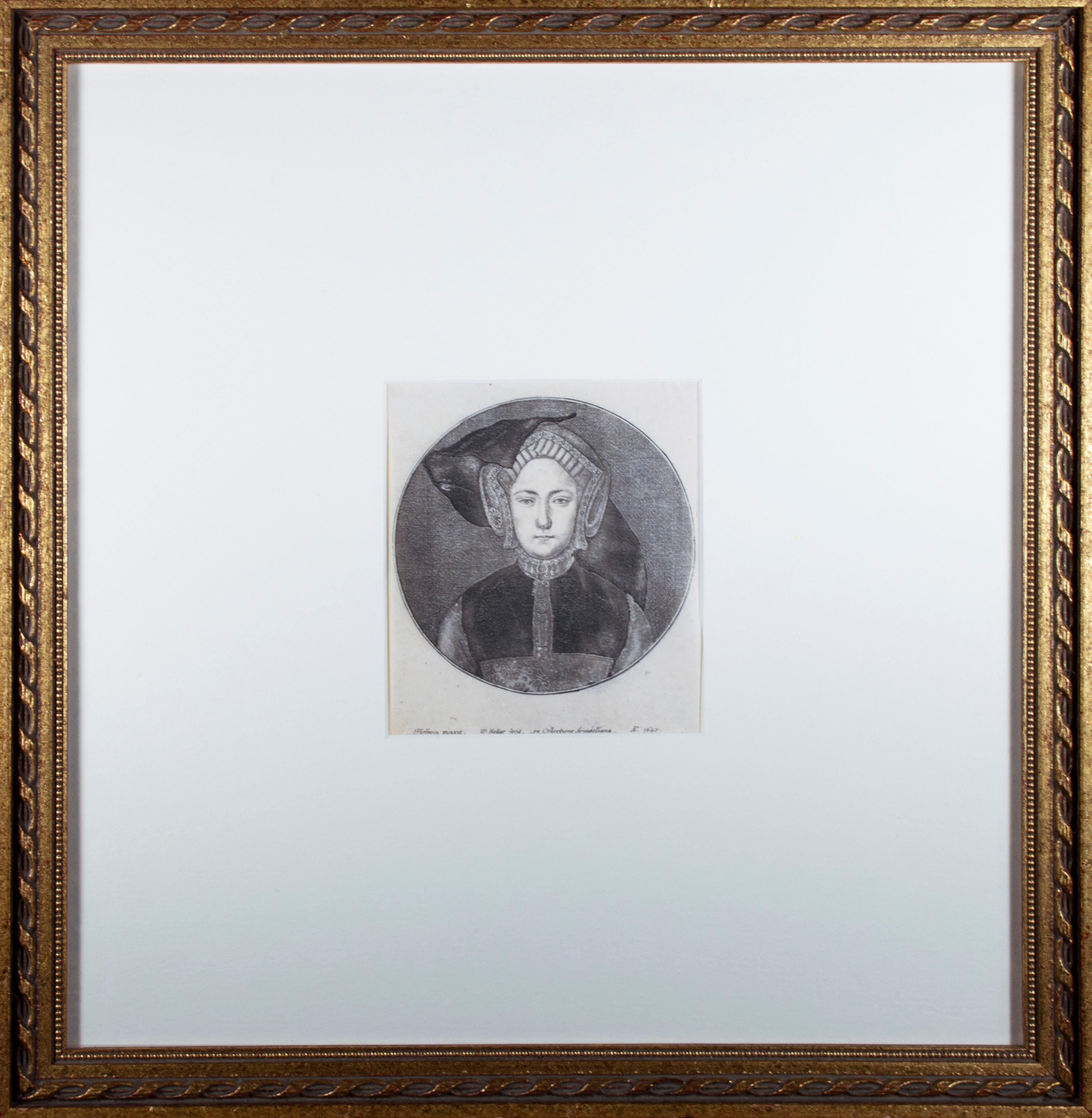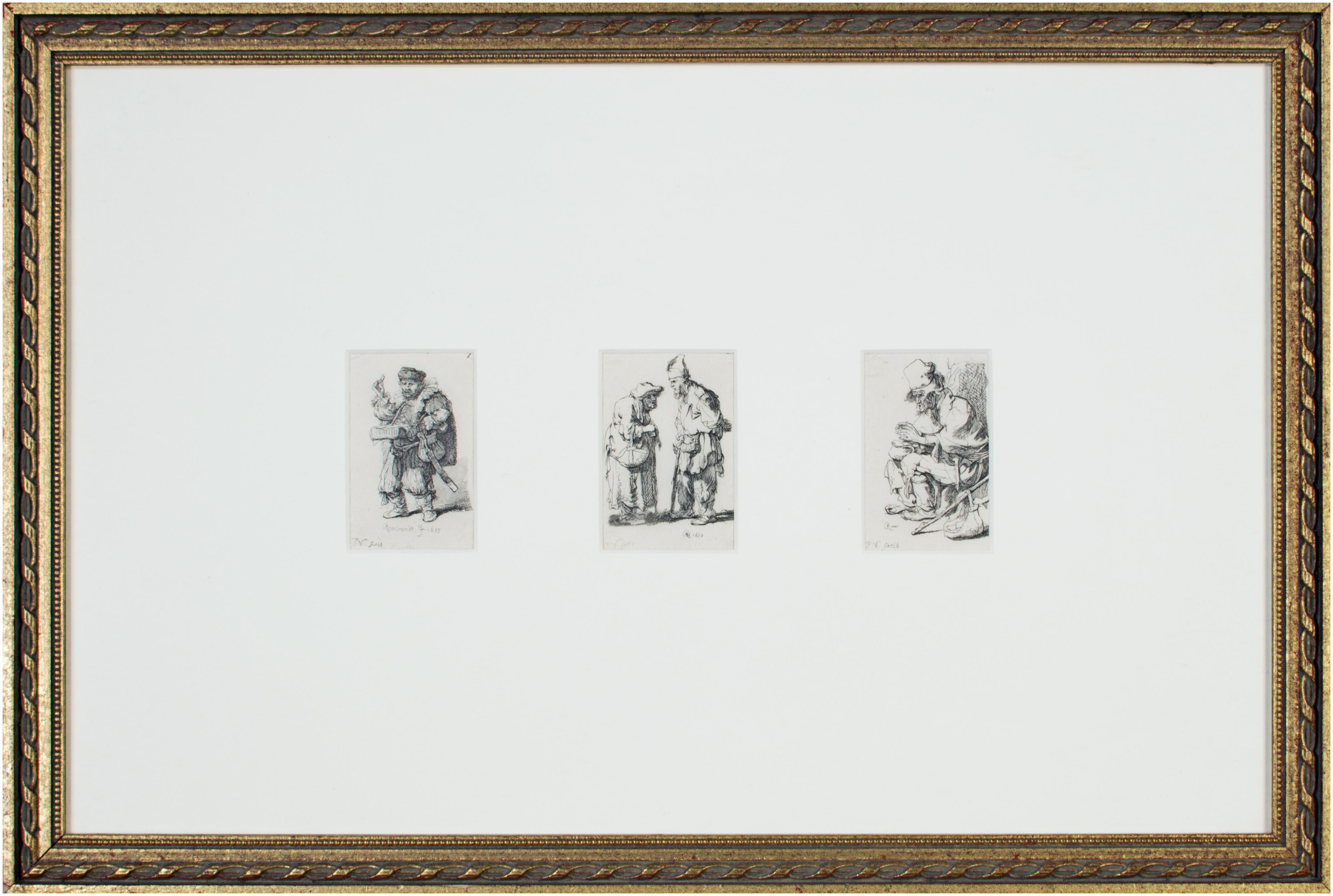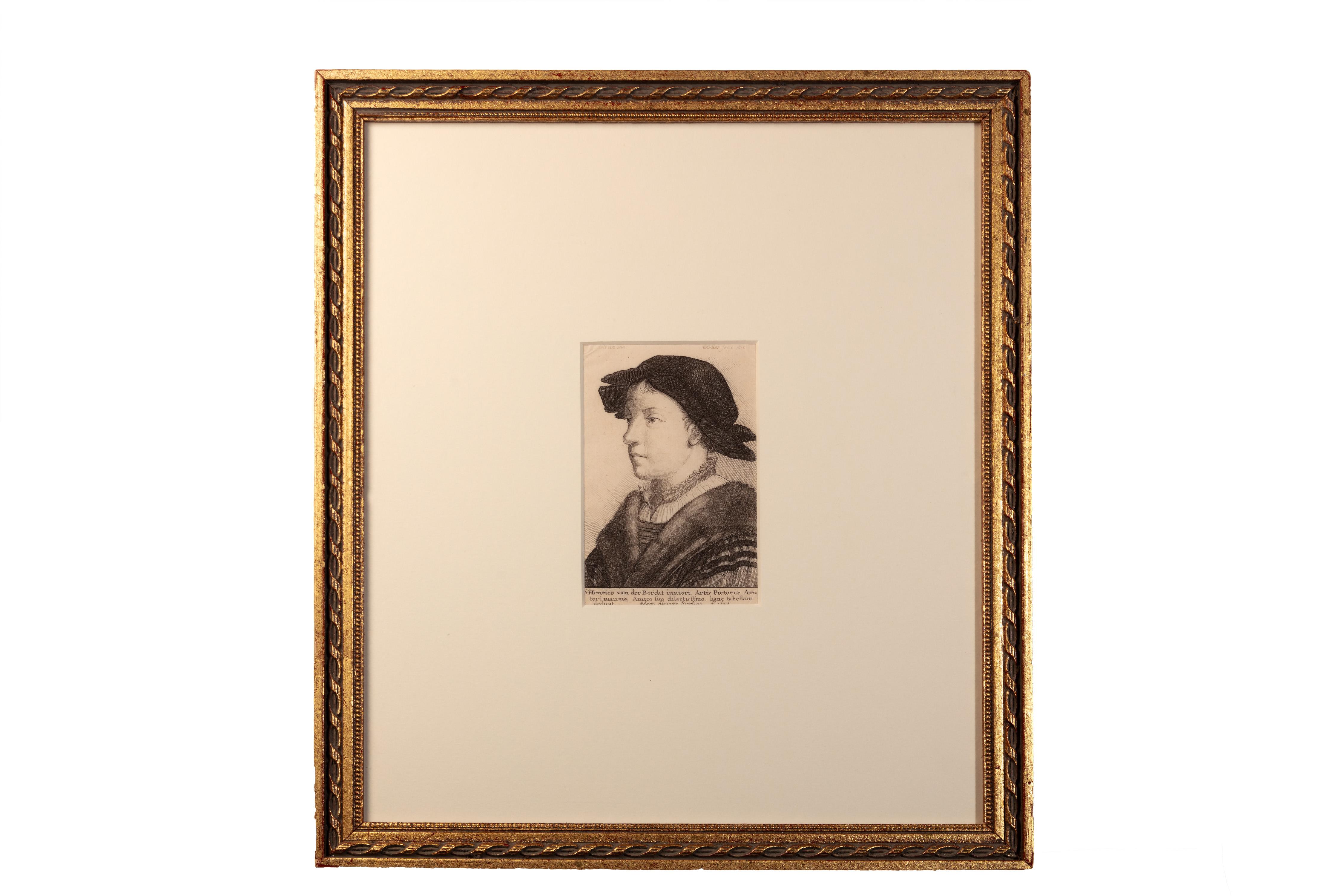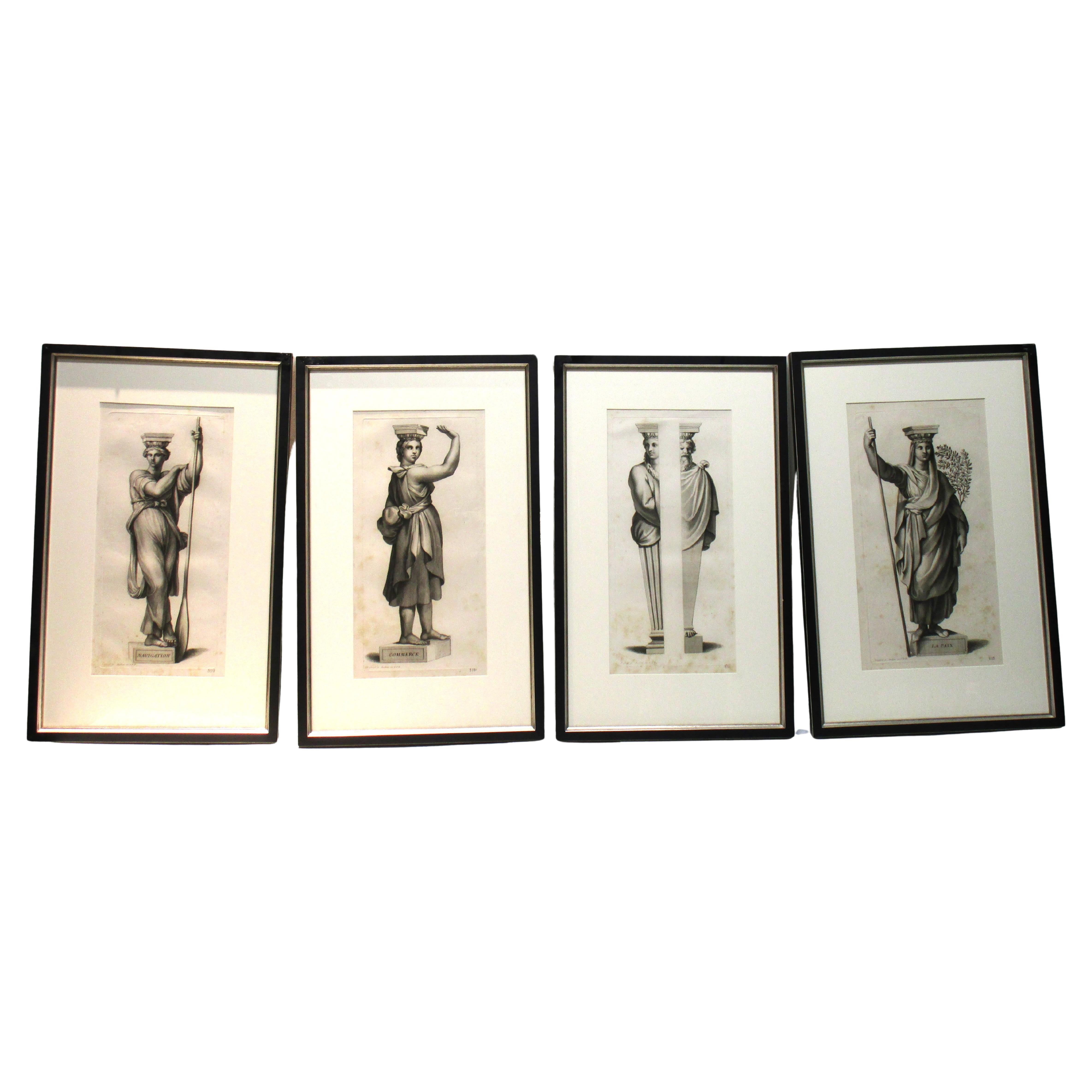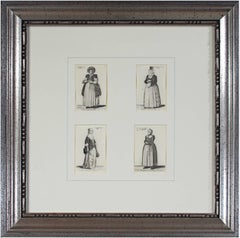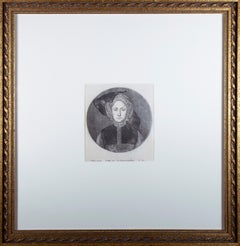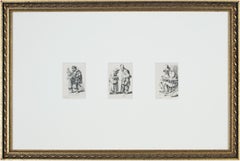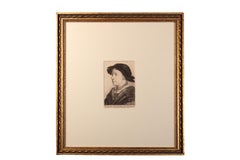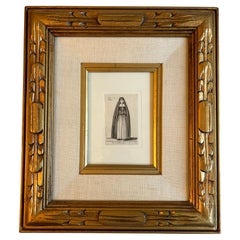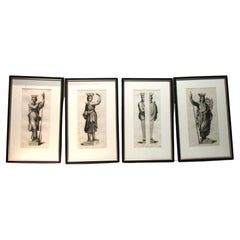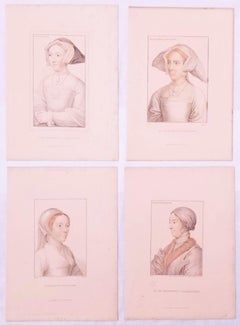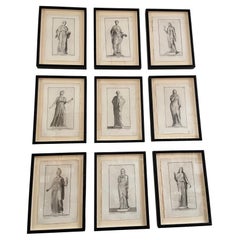Items Similar to Four original etchings of women from 'Aula Veneris' series by Wenceslaus Hollar
Want more images or videos?
Request additional images or videos from the seller
1 of 12
Wenceslaus HollarFour original etchings of women from 'Aula Veneris' series by Wenceslaus Hollar1643
1643
$3,200
£2,441.69
€2,777.60
CA$4,493.84
A$4,917.96
CHF 2,598.71
MX$58,699.15
NOK 33,162.80
SEK 30,330.08
DKK 20,747.24
About the Item
Presented here as a group are four original etchings of women in European national dress from the master printmaker Wenceslaus Hollar's series "Aula Veneris: sive, Varietas foeminini sexus (The Court of Women: or, the Variety of the Most Feminine Sex)". Prints of men and women in costume were a popular genre for collectors of the seventeenth century. Hollar would have seen these simple, small-scale prints as an opportunity to take advantage of that market, and he produced several groups of costume prints in the 1630s and 1640s.
He began self-publishing "Aula Veneris" in 1643 after his primary patron in London, Thomas Howard, the Earl of Arundel, left for Austria preceding the English Civil War. The series began under the title Theatrum Mulierum (The Theater of Women) before being retitled after the artist emigrated to Antwerp. Though the plates would suggest a desire to create an encyclopedic grouping of women's costume, he appeared to have planned for the series to be open-ended: the prints were likely sold individually rather than in bound books or portfolios, as no collection of them today has the same combination. Nonetheless, this allowed the series the flexibility to be amended with new additions in later decades, adding to its international breadth.
Girl from Zurich in wedding dress (Virgo nuptialis Tiguriensis), upper left
A Women of Prague (Mulier Pragensis), upper right
Unmarried woman from Zurich (Virgo Tiguriensis), lower left
Strasbourg bride (Virgo nuptialis Argentinensis), lower right
Etchings in black on wove paper, each trimmed to plate edge and tipped
3.5 x 2.25 inches, each sheet
21.5 x 21.5 inches, frame
each signed in the plate, lower left
Framed to conservation standards using archival materials including 100 percent rag matting and mounting. Housed in a gold finish wood moulding.
Prints in good and stable condition; some wrinkling in each corner from tipping; frame in overall good condition with some losses to gold finish.
Wenceslaus Von Prachna Hollar was a prolific and accomplished Bohemian graphic artist of the seventeenth century. His work embraced a great variety of subjects, including scenes from the bible, historical pictures, maps, portraits of his chief contemporaries, views of cities, flower and fruit pieces, and various illustrations to books. His clever sketches of costume, his views of old London and other cities are invaluable to the historian. His engravings are executed with much spirit and carefully finished. Having produced more than 3000 different prints during his career, his works can be found in every major museum collection from the Metropolitan Museum of Art to the National Gallery in London.
Source: Hughes, Heather. "Luxury and Morality: Fashioning Englishness in Seventeenth-Century Costume Prints," in 'Clothing As Culture: Delineating National Character In Costume Prints,' c. 1600-1650. PhD diss., University of Pennsylvania, 2017.
- Creator:Wenceslaus Hollar (1607 - 1677, Czech)
- Creation Year:1643
- Dimensions:Height: 21.5 in (54.61 cm)Width: 21.5 in (54.61 cm)
- Medium:
- Movement & Style:
- Period:
- Condition:Prints in good and stable condition; some wrinkling in each corner from tipping; frame in overall good condition with some losses to gold finish.
- Gallery Location:Milwaukee, WI
- Reference Number:Seller: 9841g1stDibs: LU60536874692
About the Seller
4.9
Gold Seller
Premium sellers maintaining a 4.3+ rating and 24-hour response times
Established in 1966
1stDibs seller since 2017
453 sales on 1stDibs
Typical response time: 1 hour
- ShippingRetrieving quote...Shipping from: Milwaukee, WI
- Return Policy
More From This Seller
View All"Four Women in National Costumes, " Etchings by Wenceslaus Hollar
By Wenceslaus Hollar
Located in Milwaukee, WI
"Four Women in National Costumes" is a set of four original etchings by Wenceslaus Von Prachna Hollar.
3 5/8" x 2 3/8" each print
19 1/8" x 18 1/2" frame
Wenceslaus Von Prachna Ho...
Category
17th Century Old Masters Figurative Prints
Materials
Etching
'Portrait of a Young Woman' original Hollar engraving after Hans Holbein
By Wenceslaus Hollar
Located in Milwaukee, WI
In this print, Wenceslaus Hollar presents a portrait of an unidentified woman, copying a portrait by Hans Holbein the Younger. The identity of the sitter is a mystery: formerly, the portrait was believed to be of Catherine of Aragon, and the National Portrait Gallery in London identifies her as Queen Mary I...
Category
17th Century Old Masters Portrait Prints
Materials
Engraving
18th century triptych etching figurative prints small black and white expressive
By Francois Vivares
Located in Milwaukee, WI
François Vivares was known to have produced several copies of images after older masters, such as, in this case, Rembrandt van Rijn. In this set, Vivares reproduces "The Quacksalver" (1635, Bartsch 129), "Beggar man and beggar woman conversing" (1630, Bartsch 164), and "Beggar Seated Warming...
Category
1760s Old Masters Figurative Prints
Materials
Etching
'Portrait of Henrico van der Borcht, ' original W. Hollar engraving after Holbei
By Wenceslaus Hollar
Located in Milwaukee, WI
In this print, Wenceslaus Hollar presents a portrait of D. Henrico van der Borcht, copying a painting or drawing by Hans Holbein. Copying works of famous masters was a common task of...
Category
17th Century Old Masters Portrait Prints
Materials
Engraving
17th century etching black and white figurative character print expressive
By Jan Gillisz van Vliet
Located in Milwaukee, WI
Jan Gillisz van Vliet (1605–1668) was a Dutch Golden Age artist and student of Rembrandt. He worked with Rembrandt between 1628 and 1637, inspired by his master's work. Like Rembrandt, van Vliet made a series of beggar figures, though often with a greater degree of satire and expressiveness. For example, this image of a rat catcher...
Category
1630s Old Masters Figurative Prints
Materials
Etching
19th century engraving figurative landscape Victorian urban city scene signed
By Winslow Homer
Located in Milwaukee, WI
"SEESAW--Gloucester, Massachusetts" is an original wood engraving after Winslow Homer. The artist initialed the piece in the lower right. This print depicts six children on a seesaw ...
Category
1870s Academic Figurative Prints
Materials
Engraving
You May Also Like
Three Etchings of Gentlewomen by Wensceslaus Hollar, 1607-1677
Located in Toronto, CA
A wonderful trio of etchings of gentlewomen by Wenceslau Hollar, who was born in Prague in 1607 and died in London in 1677.
The largest, A Woman of Holland, is inscribed on the upper...
Category
Antique 17th Century English Baroque Prints
Materials
Paper
$937 Sale Price / set
25% Off
Set of Four Gerard Audran Antique Engravings Raphael Allegorical Caryatids
By Gérard Audran
Located in Rochester, NY
After the 17th century prints of Gerard Audran ( founder of the school of engraving in Paris 1640-1703 ) a set of four signed Gerard Audran engravings on high quality embossed paper ...
Category
Antique Mid-19th Century French Neoclassical Prints
Materials
Glass, Wood, Paper
Set of Four Stipple Engravings from "Drawings by Hans Holbein" /// Henry VIII
By Hans Holbein
Located in Saint Augustine, FL
Artist: (after) Hans Holbein (the Younger) (German-Swiss, c. 1497-1543)
Title: "Catherine Howard Queen", "Jane Seymour Queen", "Anna Bollein Queen", a...
Category
1810s Old Masters Portrait Prints
Materials
Engraving, Intaglio
Set of 9, 18th Century Italian Engravings Feature the Portrait of Female Statue
By Giovanni Domenico Campiglia
Located in Los Angeles, CA
These Beautiful Italian 18th Century Black & White Engravings on Laid Paper Feature the Portrait of Female Statues, these pieces have been professionally Framed using all new Materia...
Category
Antique 18th Century Italian Renaissance Prints
Materials
Paper, Textile, Linen, Wood, Paint
Set of six engravings of Biblical figures by Jacques Callot, 1631
By Jacques Callot
Located in Kenilworth, IL
Set of six biblical prints from master French engraver, Jacques Callot, from his works of the Saints and Apostles. The works are float mounted with a deep beveled archival mat and fr...
Category
Antique 17th Century French Prints
Materials
Paper
Set of 7 Antique Prints of Various Personifications by Von Prenner, '1748'
Located in Langweer, NL
Set of seven antique prints of various personifications including:
1) Plate XIII: Personification of Religion, section of a fresco from the Anticamera del Concilio, Caprarola; a f...
Category
Antique Mid-18th Century Prints
Materials
Paper
$1,438 Sale Price / set
20% Off
More Ways To Browse
Thomas Earl
Sex And The City Clothing
The Wailing Wall Dali
Thomas Mcknight Venice
Tim Doyle
Tran Nguyen Hieu
Tranquillo Marangoni
Trolley Banksy
Utagawa Kunisada 1857
Vasarely Juggler
Velvet Elvis
Victor Vasarely Tennis Player
Vintage Braniff Airline Posters
Vintage Hockey Signs
Vintage Ira Posters
Virginia Fisher On Sale
Virginia Fisher
War And Peace Picasso
